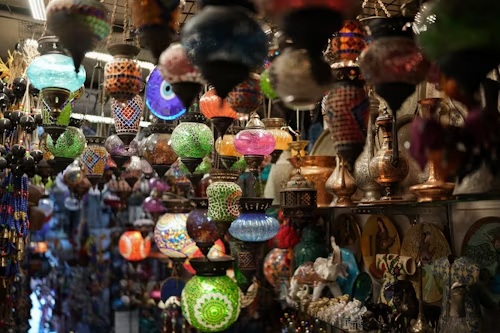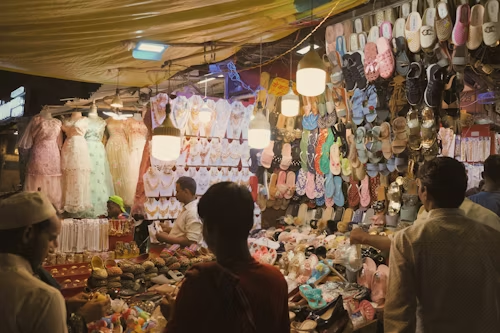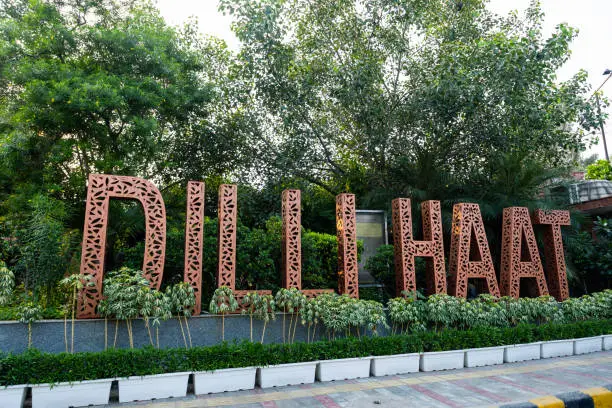Discovering Delhi’s Soul: A Journey Through Its Markets and Food
Delhi is a city that hums with life. Its streets pulse with stories, scents, and sounds that weave together centuries of history and modern ambition. I stepped into this chaos on a sweltering afternoon, determined to uncover the cultural heartbeat of India’s capital. My guide? Its legendary markets and vibrant food scene. From the labyrinthine alleys of Chandni Chowk to the polished charm of Khan Market, from sizzling street food stalls to elegant fine dining, Delhi offered me a sensory adventure I’ll never forget.
This is the story of how I fell in love with Delhi’s soul, one market and one bite at a time. Here’s what I learned about navigating its cultural treasures—and how you can, too.

A. Markets & Shopping: Where Stories Meet Commerce
Delhi’s markets are more than places to shop. They’re living museums, each with its own rhythm and personality. I dove into four iconic bazaars, each offering a unique slice of the city’s culture.
Chandni Chowk: The Heart of Old Delhi
My journey began in Chandni Chowk, a 17th-century market built by Mughal Emperor Shah Jahan. The narrow lanes buzzed with rickshaws, vendors, and shoppers. I felt like I’d stepped into a time machine. The air was thick with the aroma of spices and the chatter of haggling.

- What to Explore: Bridal lehengas, silver jewelry, and silk sarees line shops in Kinari Bazaar and Dariba Kalan. Don’t miss the wholesale spice market at Khari Baoli—Asia’s largest.
- Pro Tip: Visit early morning to avoid crowds. Bargain firmly but respectfully.
- My Moment: I bought a pair of intricately embroidered juttis for half the quoted price after a playful negotiation. The vendor’s smile told me I’d earned his respect.
Chandni Chowk is chaotic, but its energy is addictive. It’s where Delhi’s past and present collide.
Dilli Haat: A Cultural Mosaic
Next, I headed to Dilli Haat, an open-air market designed like a traditional village haat. The thatched-roof stalls showcased artisans from across India. I wandered past Kashmiri shawls, Rajasthani pottery, and Madhubani paintings, each stall telling a story of craftsmanship.

- What to Explore: Handwoven textiles, beaded jewelry, and bamboo decor. Cultural performances like folk dances happen most evenings.
- Pro Tip: Entry costs Rs. 20 (about $0.25). Bargain lightly—prices are fairer here.
- My Moment: I chatted with a weaver from Gujarat about her Kantha embroidery. Her pride in her work made my purchase—a vibrant tote bag—feel special.
Dilli Haat is a curated glimpse into India’s diversity. It’s perfect for souvenirs and a relaxed shopping experience.
Khan Market: Upscale Elegance
For a contrast, I visited Khan Market, a U-shaped enclave favored by Delhi’s elite. This posh market blends high-end boutiques with cozy bookstores and trendy cafes. The vibe is sophisticated yet welcoming.
- What to Explore: Designer labels like Anita Dongre, Ayurvedic products at Kama Ayurveda, and books at Bahrisons. Stop for coffee at The Big Chill Cafe.
- Pro Tip: Prices are fixed in most stores. Bring cash for street vendors.
- My Moment: I splurged on a handcrafted silver necklace at Amrapali Jewellers. The shop’s elegance made me feel like royalty.
Khan Market is where luxury meets culture. It’s ideal for those seeking quality over chaos.
Janpath Market: Bohemian Bargains
My final stop was Janpath Market, a vibrant street bazaar near Connaught Place. Known for its bohemian vibe, it’s a magnet for budget shoppers and tourists. Tibetan and Gujarati stalls overflowed with quirky finds.
- What to Explore: Embroidered jholas, Pashmina shawls, and junk jewelry. Look for Tibetan masks and brass trinkets.
- Pro Tip: Bargain hard—start at half the quoted price. Avoid Sundays for thinner crowds.
- My Moment: I scored a pair of funky earrings for Rs. 100 after a spirited haggle. The vendor laughed, calling me a “tough customer.”
Janpath is a treasure hunt. It’s where you find unique pieces without breaking the bank.
B. Food Scene: A Feast for the Senses
Delhi’s food is as diverse as its markets. From street-side chaat to Mughal-inspired fine dining, the city’s culinary landscape is a love letter to flavor. I tasted my way through its hotspots, each bite revealing a new layer of Delhi’s culture.
Street Food Hotspots: Where Flavor Reigns
Delhi’s streets are a foodie’s paradise. I started at Chandni Chowk’s Paranthe Wali Gali, a narrow lane famous for stuffed parathas. The sizzle of dough hitting the tawa and the scent of ghee drew me in.
- Must-Try: Aloo paratha at Babu Ram Devi Dayal or jalebis at Old Famous Jalebi Wala, crispy and dripping with syrup.
- Other Spots: Lajpat Nagar for momos at Dolma Aunty’s stall, and Jama Masjid for kebabs at Karim’s.
- My Moment: I devoured a paneer paratha, its spicy filling paired with tangy curd. The crowd around me—locals, tourists, families—made it a shared celebration.
Street food in Delhi is bold and unapologetic. It’s where you taste the city’s soul.
Traditional Delhi Cuisine: A Mughal Legacy
Delhi’s traditional dishes reflect its Mughal heritage. I sought out iconic spots to savor these time-honored recipes.
- Must-Try: Butter chicken at Moti Mahal in Daryaganj, where the dish was born. Biryani at Al Jawahar near Jama Masjid is fragrant and tender.
- Other Dishes: Chhole bhature at Sita Ram Diwan Chand in Paharganj, a fluffy bread with spicy chickpea curry.
- My Moment: At Moti Mahal, the creamy butter chicken was a revelation. I mopped up every drop with naan, savoring its smoky depth.
Traditional Delhi cuisine is rich and comforting. It’s history on a plate.
Fine Dining Experiences: Elegance Meets Innovation
For a refined experience, I explored Delhi’s fine dining scene. Khan Market’s restaurants offered global flavors with Indian flair.
- Must-Try: Dum Pukht at ITC Maurya for royal biryani. Indian Accent in Lodhi blends tradition with creativity—think tandoori lamb with quinoa.
- Pro Tip: Book ahead for popular spots. Expect higher prices but impeccable service.
- My Moment: At Indian Accent, a deconstructed chaat amuse-bouche arrived in a tiny glass. Its explosion of flavors was pure art.
Fine dining in Delhi is where tradition meets modernity. It’s a treat for special occasions.
Food Markets and Tours: A Guided Adventure
To dive deeper, I joined a food tour through Chandni Chowk with Delhi Food Walks. Our guide, Gajendra, led us through hidden gems, sharing stories of each dish.
- Must-Try: Kachoris at Jung Bahadur Kachori Wala and rabri falooda at Giani di Hatti.
- Other Options: Dilli Haat’s food stalls for regional dishes like Rajasthani dal baati or Kashmiri kebabs. INA Market for fresh seafood and spices.
- My Moment: On the tour, I tried pani puri, its tangy water bursting in my mouth. Gajendra’s enthusiasm made every stop unforgettable.
Food tours and markets are immersive. They’re the best way to taste Delhi’s diversity.
The Journey Continues
As I left Delhi, my bags were heavier with souvenirs—juttis, shawls, and spices—but my heart was fuller. Chandni Chowk’s chaos, Dilli Haat’s artistry, Khan Market’s polish, and Janpath’s quirkiness showed me a city that embraces every facet of life. The parathas, kebabs, and butter chicken lingered on my palate, each bite a memory of Delhi’s warmth.
I’m already planning my return. Next time, I’ll explore Paharganj’s bohemian stalls and savor more momos in Lajpat Nagar. Delhi’s markets and food are endless stories, waiting for you to turn the page. Will you take the first step into this vibrant world?